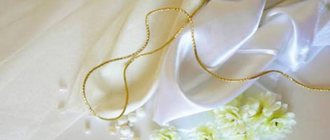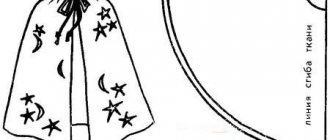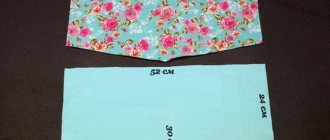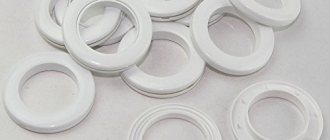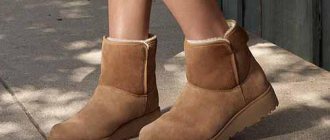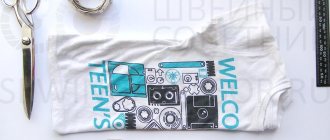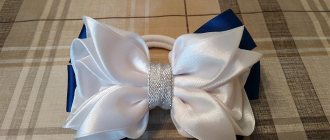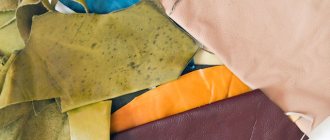Required materials and tools
It is not difficult to sew a simple cover model. To do this, you only need a sewing machine, appropriate fabric, some tools, accessories and some sewing skills (the ability to make straight lines, patience, perseverance).
It is not difficult to sew a simple cover model.
Fabric selection
When deciding on the fabric, you can consider what materials the ready-made mattress covers that go on sale are made from. Then decide on the purpose of sewing your own product. The choice of material will directly depend on the role assigned to it, such as: a regular “duster”, a waterproof, warming, hypoallergenic, or surface-softening product.
The choice of material will directly depend on the role assigned to it.
General requirements for materials for products of this type: strength, resistance to friction and tearing, and, if necessary, waterproofing or antibacterial impregnation. Available for sale:
- natural;
- synthetic;
- combined.
Natural ones include: cotton, satin, calico, poplin, silk, and others. They are hygroscopic and pleasant to the touch. Disadvantages include fragility (compared to synthetic and combined options). Good moisture absorption is an advantage and a disadvantage at the same time.
Natural ones include: cotton, satin, calico, poplin, silk, and others.
Important! Natural fabrics need to be wetted before cutting (water temperature = the temperature in which the mattress cover will subsequently be washed). If this is not done, after the first wash the cover will shrink and become small.
Synthetic - polysatin, polyester, polyester - budget-friendly, durable, wear-resistant, easy to wash, dry quickly, do not deform. Disadvantages include low breathability, the possibility of a static effect (electrification), and most do not have a warming effect.
Synthetic - polysatin, polyester, polyester - budget-friendly, durable, wear-resistant, easy to wash, dry quickly, do not deform.
Combined ones are the most preferable. For example, jacquard (80% cotton / 20% synthetic fiber) is widely used in the manufacture of covers. Or a waterproof membrane fabric consisting of two layers (the top cover is soft terry; the bottom is a “breathable” but waterproof polyurethane membrane).
Jacquard is widely used in the manufacture of covers.
The assortment is quite wide and is replenished every year. To see your options, you can:
- visit several websites selling mattress covers;
- in the characteristics section, read the names and advantages of a particular material;
- enter the name you like in the Internet search column with the request to buy.
As a rule, today there are no problems with finding and purchasing any material you like.
Accessories
From the accessories you will need:
- threads (100% polyester) in color;
- elastic band (wide - for the version with corner clamps or linen - for the product with sides).
Choose threads that match the color of the mattress cover.
Preparing tools
You will also need:
- centimeter tape (for taking measurements);
- tailor's chalk or sharpened soap;
- sharp scissors (for cutting);
- hand needle (for basting);
- tailor's pins (for chopping);
- safety pin (for retracting the elastic);
- iron;
- sewing machine.
Removable or non-removable cover
Modern equipment allows us to produce mattresses with removable covers. To do this, a cover is made, which is then put on the mattress. There is no tight fit between the fabrics and the filler. Removable models are characterized as practical and, if necessary, allow you to remove and wash the cover or take the product to the dry cleaner. It is problematic to put on and take off the mattress yourself. Some materials shrink greatly after washing, making subsequent use almost impossible.
Removable models do not fit tightly to the structure, unlike non-removable models. The surface of the material may be slippery and wrinkles may form in the corners. This will lead to a decrease in the service life of the mattress and loss of orthopedic properties. Edging equipment makes it possible to produce non-removable covers. In this case, the material will be sewn to the filler of the finished structure. The adherence of the material to the filler will be excellent, but it will be almost impossible to do anything if the surface is heavily contaminated.
Removing covers is not recommended by experts, who claim that the best way to remove dirt and put the product in order is to call dry cleaning at home. The cover cannot be cleaned on your own. Mattress covers will help prevent stains and signs of wear on the product. The cover is easy to remove and can be washed frequently. The main requirement is the breathability of the selected material, its strength, hydrophobicity and elasticity. In the manufacture of mattress covers, a special type of material is used that provides excellent air exchange.
Evaporating moisture will not allow insects and harmful microorganisms to grow inside the mattress structure. The absence of dust will prevent the formation of allergic reactions. Covers made of wool, linen and cotton are characterized by a high level of strength. Jacquard is considered the most durable and wear-resistant material. Cheap mattresses are dressed in polycotton. The most commonly used stretch is cotton-based. Orthopedic products are sheathed with natural fabrics that contain synthetic fibers that make them elastic. Hydrophobicity will protect the product from moisture, mold, and unpleasant odors.
Pattern for a mattress cover
First of all, you need to take the correct measurements of the mattress. There are few measures, only three:
- length;
- width;
- height (if necessary).
First of all, you need to take the correct measurements of the mattress.
Pattern for a mattress cover with corner elastic bands
This is the simplest model. A kind of sheet with fasteners in the form of wide corner elastic bands. For this version of the cover it is not at all necessary to make a paper pattern. The main thing is not to make a mistake when measuring the length and width of the mattress surface. All calculations can be made on a sheet of paper (in the form of a drawing), and then exactly follow them when applying the parameters to the fabric.
The main thing is not to make a mistake when measuring the length and width of the mattress surface.
The only thing you need is a sheet of paper (A4 format is enough) to copy the shape of the corner (orthopedic mattresses most often have rounded corners). A corner beautifully outlined on a sheet of paper needs to be cut along the contour and used as a template.
Marking and cutting can be done directly on the fabric.
Pattern for a mattress cover with sides
The basic principle is the same as for the previous model.
- Taking measurements from the mattress - length, width, height.
- Carrying out calculations on a sheet of paper (in the form of a sketch). In the calculations, you need to additionally take into account (add) seam allowances (for stitching the sides) - 2 cm in width and 2 cm in length (if you plan to sew with a 1 cm seam).
- Copy the shape of the corner of the mattress and prepare a template.
- Cut out the main part (“sheet”).
- Cut out a side strip. The height of the strip is equal to the height of the mattress + allowance for stitching (1 cm) + 10-12 cm (to fit the mattress) + 2-3 cm for allowance for the elastic (depending on its width).
Carrying out calculations on a sheet of paper (in the form of a sketch).
Sewing a mattress cover
The amount of material will depend on the width of the commercially available (selected) fabric and the intended model.
- Fabric width.
Typically, fabrics produced for sewing bedding have a larger width. Therefore, there is no need to sew the main part (“sheet”) from several parts. If the width of the fabric matches the width of the mattress, the amount of material ordered will depend on the length of the sleeping surface, the presence of sides or bias tape.
If the width of the fabric matches the width of the mattress, the amount of material ordered will depend on the length of the sleeping surface, the presence of sides or bias tape.
- Model.
Models can be single-layer or two-layer (quilted, with a synthetic padding layer). For two-layer options, the material will accordingly be needed twice as much. Plus the purchase of an additional layer of insulating (softening) padding polyester.
Quilted fabric on padding polyester.
Model with corner elastic bands
Based on the preliminary calculations, cut out a rectangle with rounded corners (using the prepared template). If we are talking about a quilted product with a soft layer, cut out two parts from fabric, and another from padding polyester.
Model with corner elastic bands.
If there is a synthetic padding layer, it is better to cut out all the parts with a margin (3-5 cm on each side). Due to the thickness and the stitching process, the product may shrink in size.
- Fold the layers (rectangle - padding polyester - rectangle), align the sections. To avoid displacement and distortions, it is better to lay them on a large, flat surface (for example, on the floor).
- Pin all the layers along the edges with tailor's pins and sweep along the perimeter.
- Quilt the mattress cover (with squares, diamonds, diagonal lines). Make step-by-step markings (several lines at a time), pierce all layers next to the line with pins (to avoid distortions).
- After finishing stitching, try on. Place the quilted cover on the mattress and cut off the excess.
- Pin the wide elastic bands at the corners (on the wrong side) and try them on again. If necessary, tighten (shorten).
- Cut out the bias tape (trim width = desired finished width multiplied by 4 plus another 2 cm for thickness). The binding, as a rule, consists of several parts. The parts must be connected to each other at an angle of 45°.
- Sew one side of the binding around the perimeter (slightly pulling) - with the facing of the binding facing the wrong side of the cover.
- Fold the trim around the edge. Baste the binding on the front side, tucking the cut inward and making sure not to warp it.
- Iron the edge.
When making a single-layer model, after cutting out the rectangle, you can immediately proceed to step 5.
The main thing is not to rush and do everything carefully.
Model with sides
The main part can be cut out in two ways.
- In the form of a rectangle with rounded corners (with allowances for stitching the edges) and stitched edges (taking into account the allowance for stitching to the main part, 10-12 cm for the backing and allowance for the drawstring for the elastic). Option preferred for a large mattress (double size). In addition, rounded corners will be made more professionally and clearly.
- One rectangle, where the height of the side, the backing (entry under the mattress) and the drawstring allowance will be added to the length and width of the sleeping surface. A simplified version that requires additional turning of corners. As a result, the corners of the cover will be sharp (not rounded).
Mattress cover in the form of a rectangle with rounded corners.
All that remains is to collect the parts.
- If we are talking about a quilted version, follow steps 1-4.
- Prepare a side strip. Make the bottom cut of the strip into a hem with a closed cut (wing), leaving a hole for retracting the elastic.
- Sew the strip to the main part, having previously folded the parts face to face and chipped (swept away).
- Serve or zigzag the cut (so as not to fray). You can assemble the parts using a double seam (in this case, you must initially put a double allowance on the seams).
- Pull in the elastic band.
Quilted version of the mattress cover.
Summing up
As you can see, sewing a mattress cover is not difficult. A wide range of fabrics and accessories allows you to choose, the main thing is not to rush and not make a mistake with the sizes. It’s better to try on, double-check and recalculate several times than to later buy and refine what’s missing. It is more prudent to cut out with a reserve, and then cut off the excess. To ensure that the product turns out beautiful and of high quality, you should never rush. Each stage must be done carefully and carefully.
Sewing a mattress cover is not difficult - the main thing is to do everything according to the instructions and not give up.
Why do you need a case?
Each mattress is covered with a cover, and sometimes even more than one. During production, mattresses are covered in stationary covers that cannot be removed. They are sewn from dense, strong fabric, usually beautiful and expensive (for example, jacquard). Unfortunately, such a mattress cover cannot be removed and washed, so to prevent its rapid wear and tear, you need to stock up on another cover - a removable one that can be washed regularly. You can buy it in a store or sew it yourself.
A mattress cover is a very necessary and useful thing.
It's no secret that the bed absorbs everything from the human skin: sweat, dirt, dead cells, and besides this, for those who like to have breakfast in bed, as well as lunch and dinner, it happens that crumbs, drops and other food particles get into bed, and not always a sheet or even a bedspread can keep the mattress clean. Therefore, regular cleaning, washing and ironing of the cover covering the mattress is extremely necessary; it can prevent the occurrence of various diseases and maintain aesthetic cleanliness and neatness.
Note! An important incentive for purchasing a removable mattress cover is wear and tear. Mattresses are expensive and it is often impossible to change them, but a mattress pad will cost much less and can be changed more often, pleasing the eye with an abundance of colors.
There are different types of mattresses and they all need a mattress protector.
All mattresses need cleanliness - a child’s mattress, a swing mattress, and a regular sleeping one; the mattress on which a child sleeps especially requires maintaining cleanliness.


